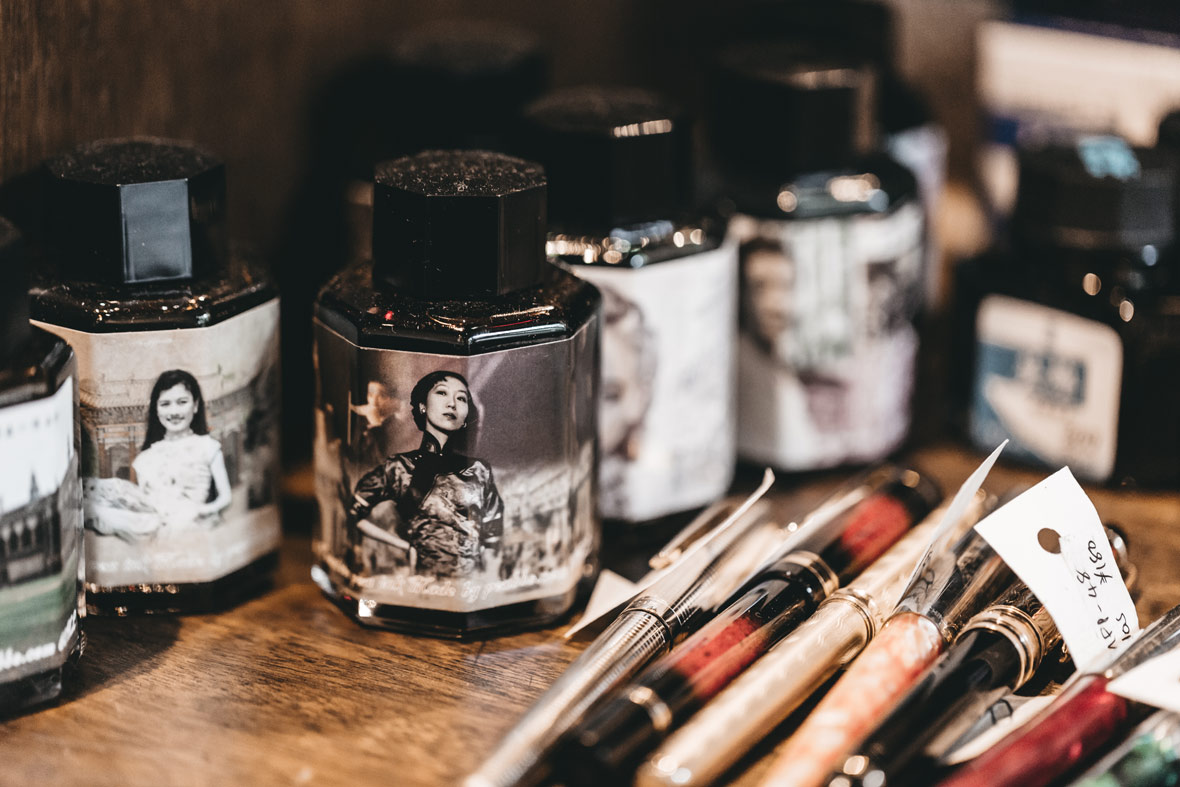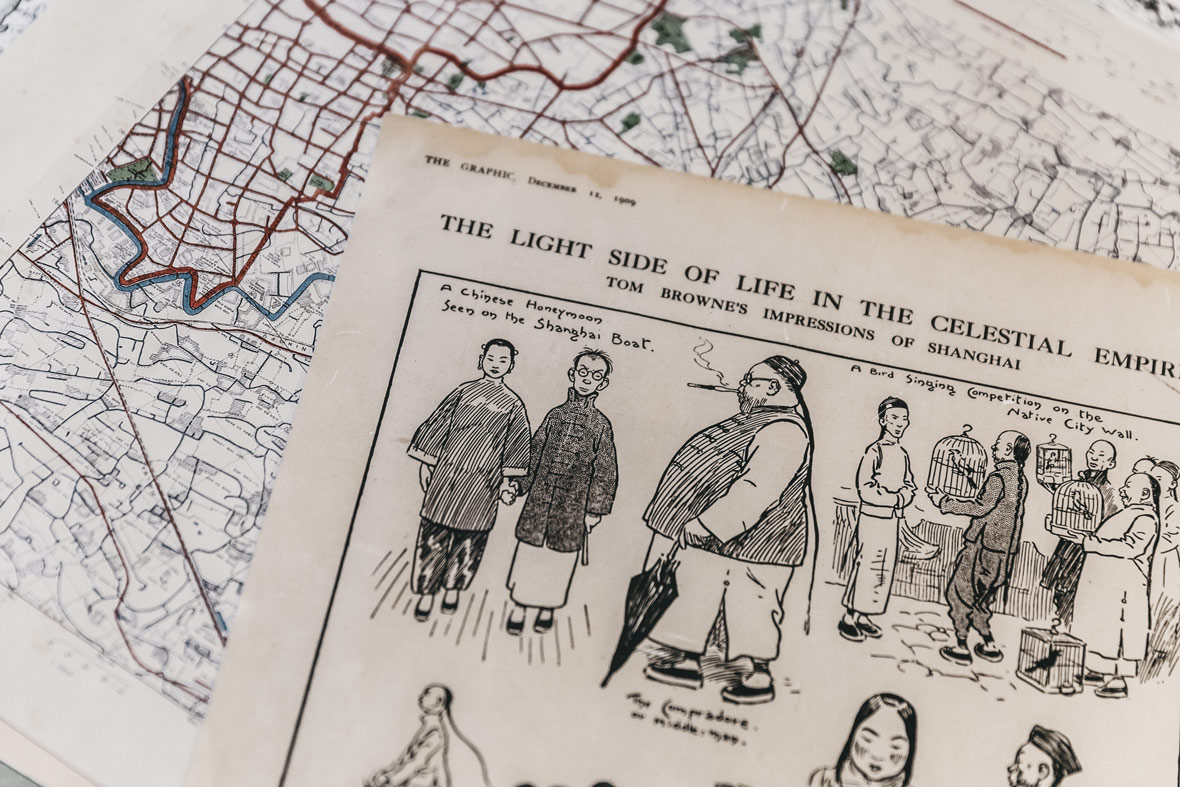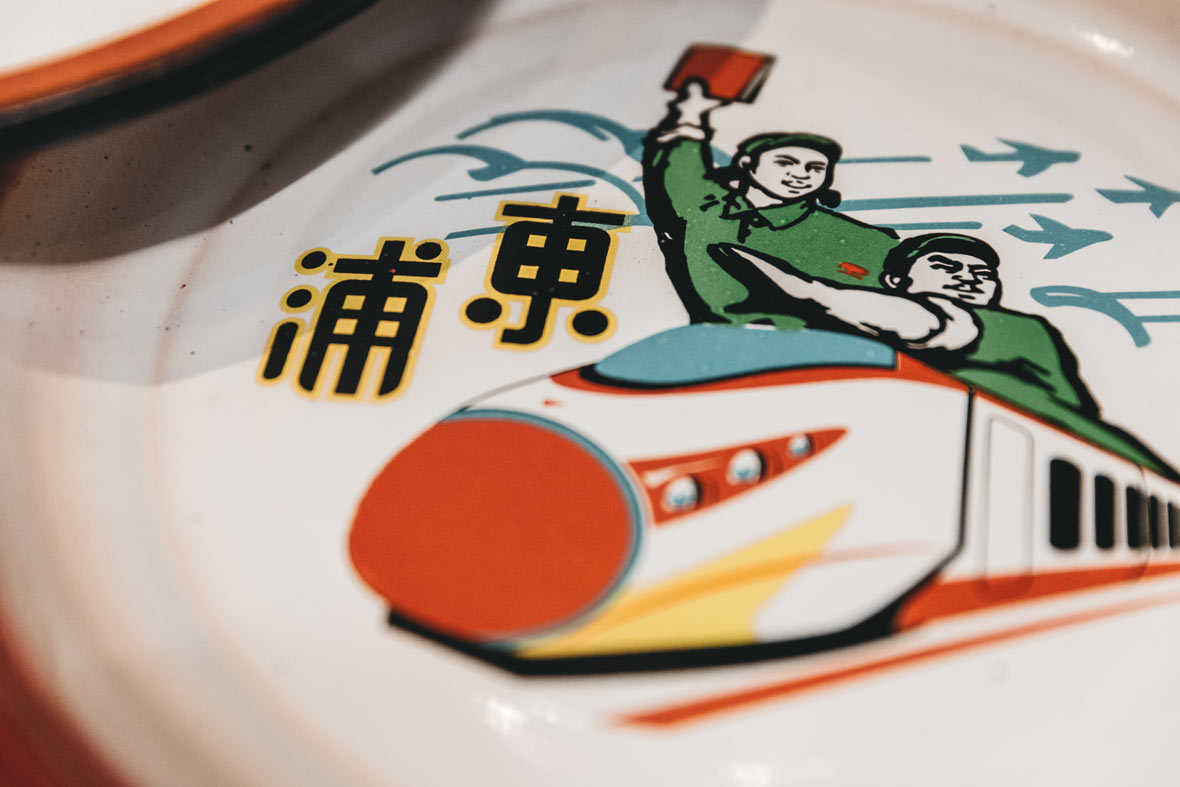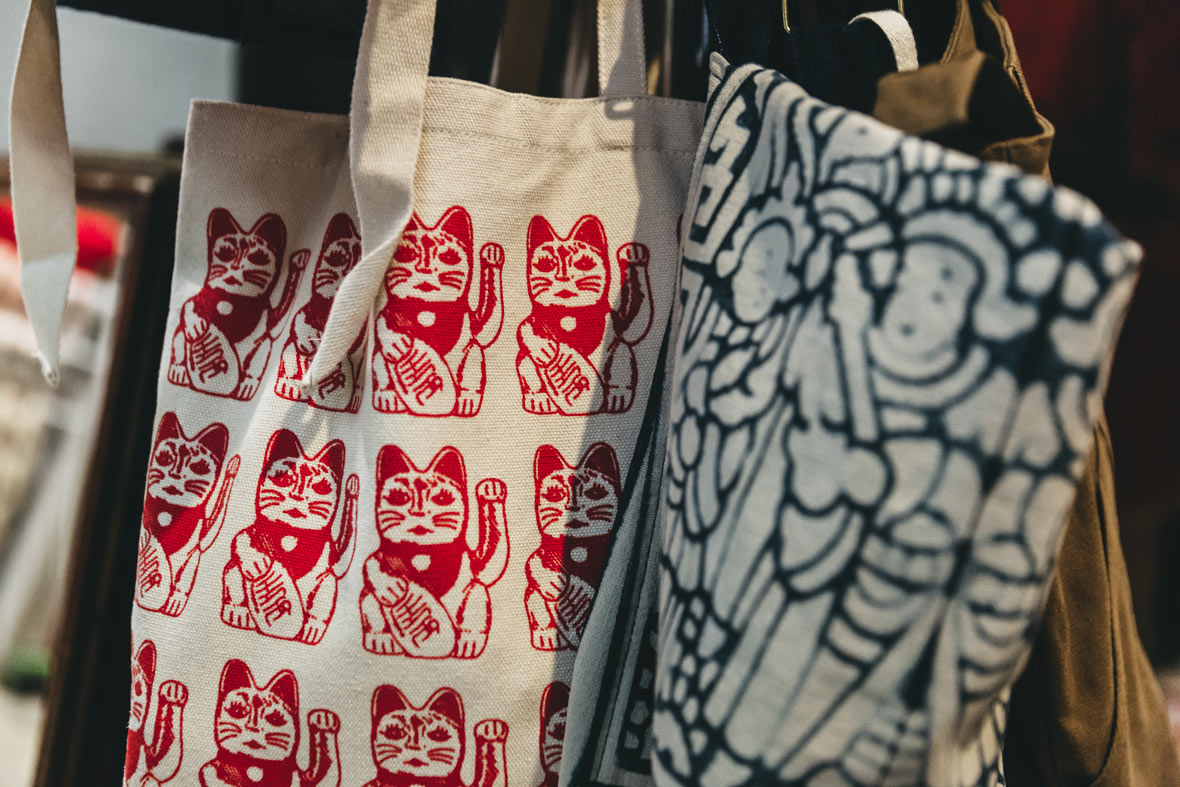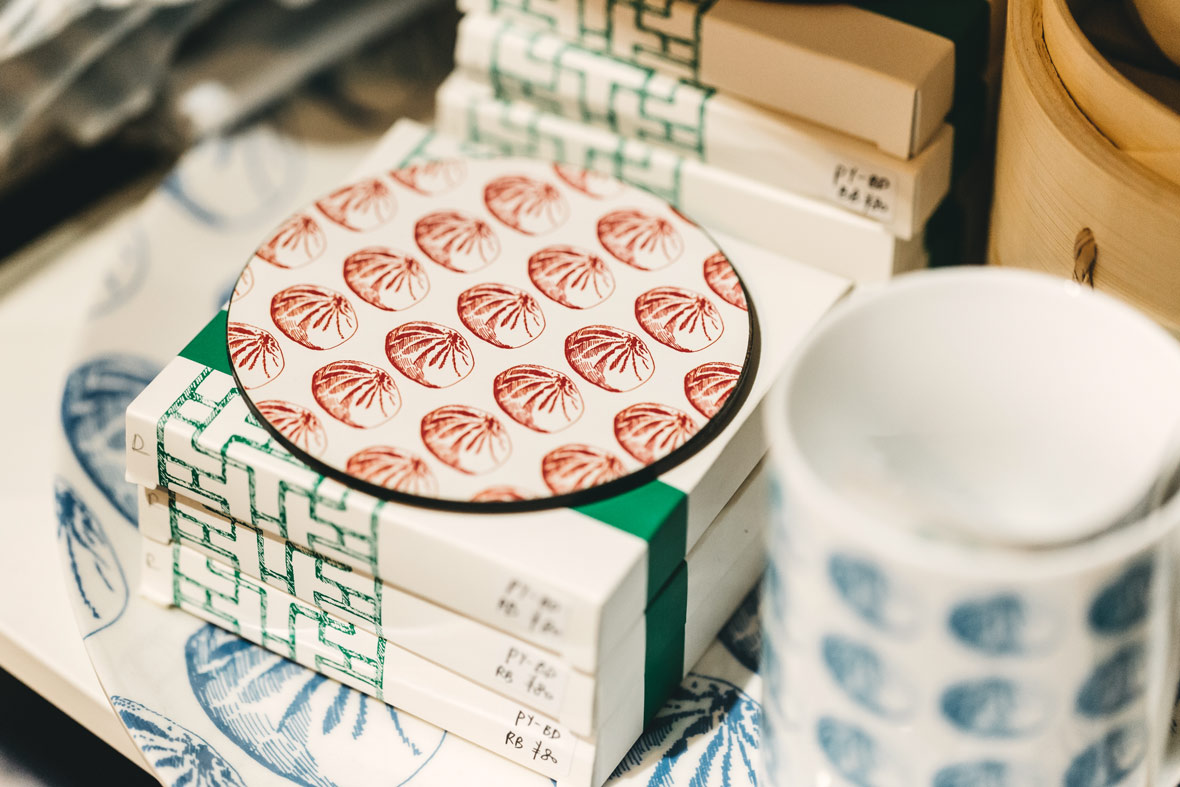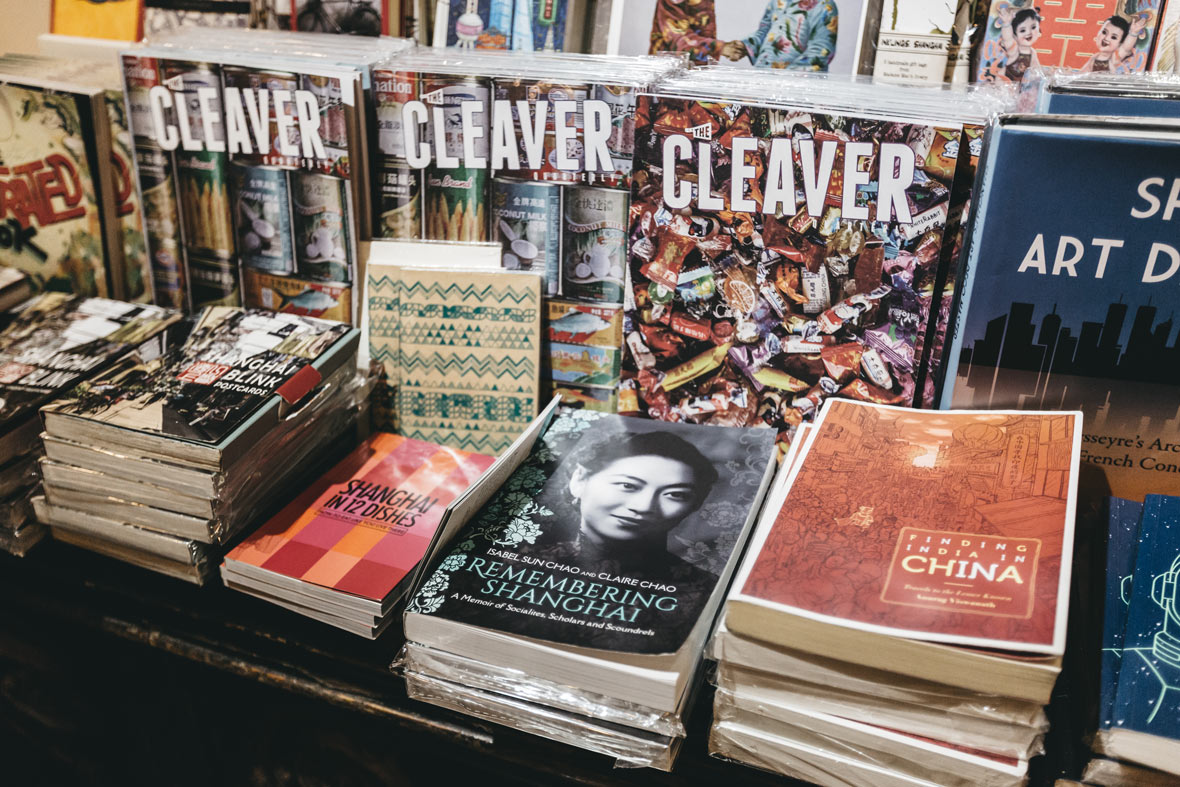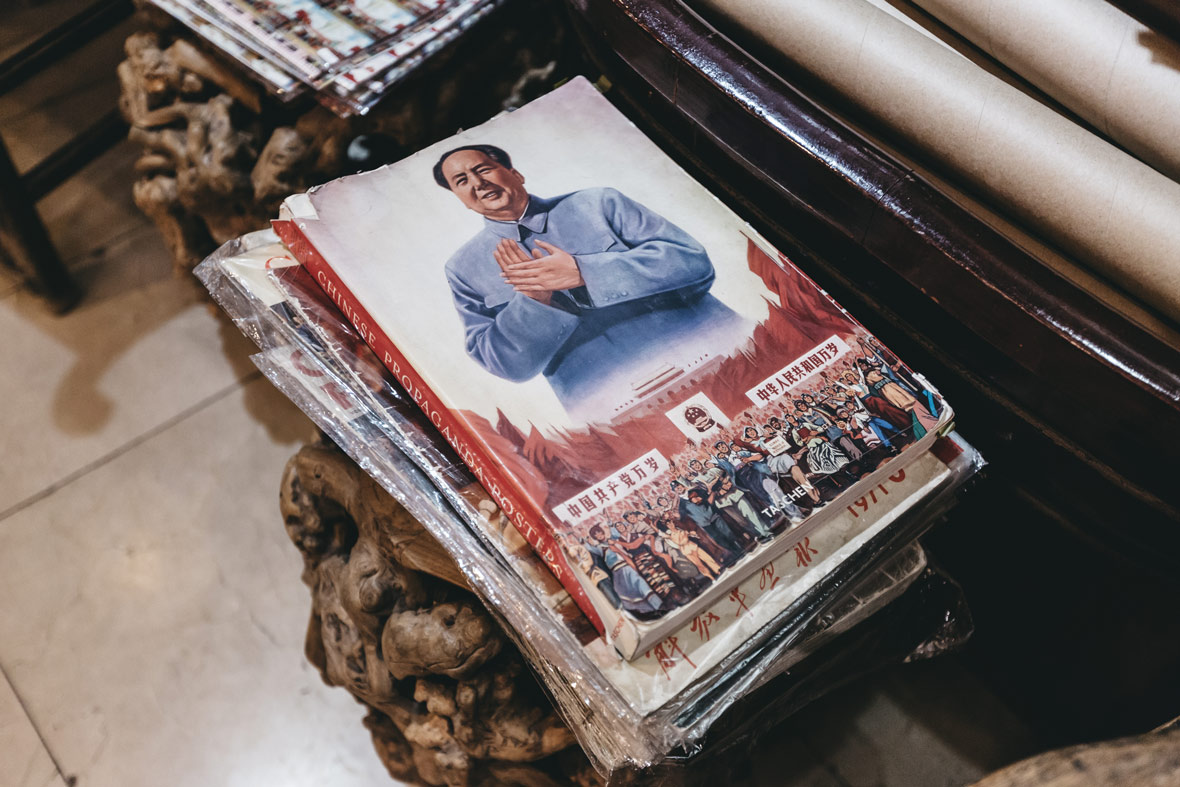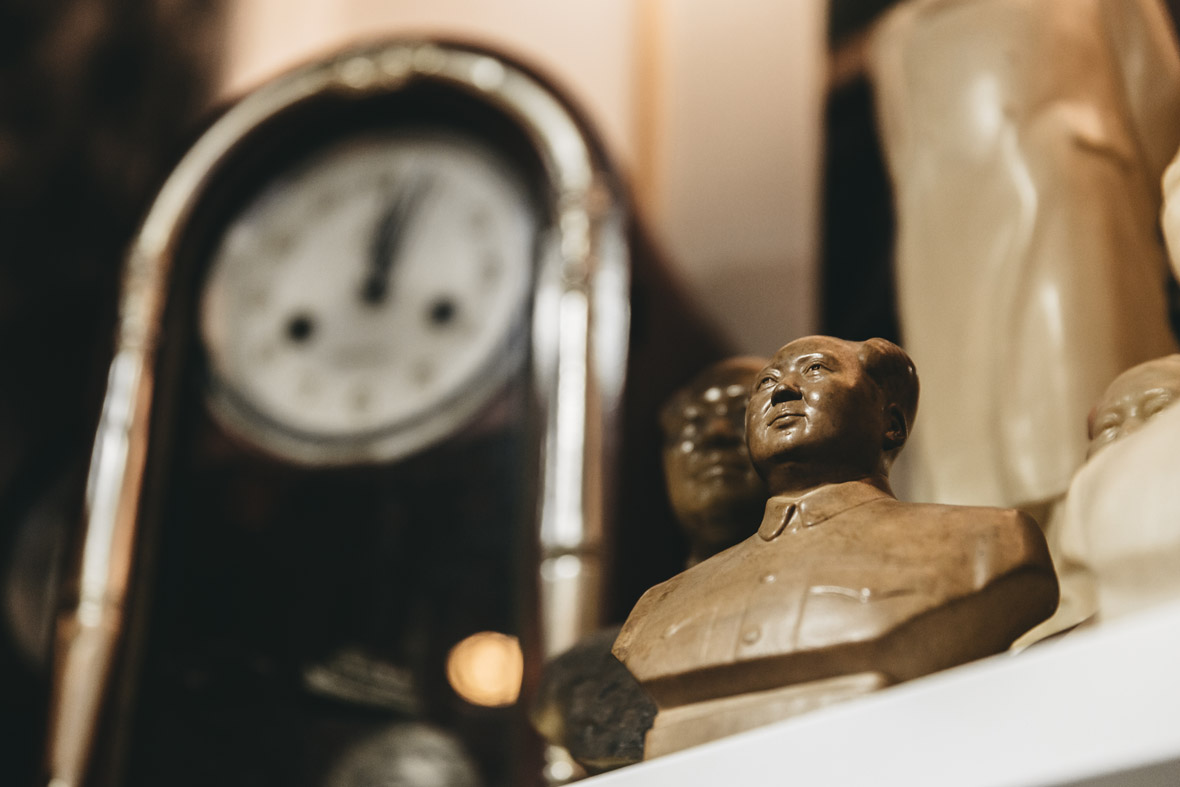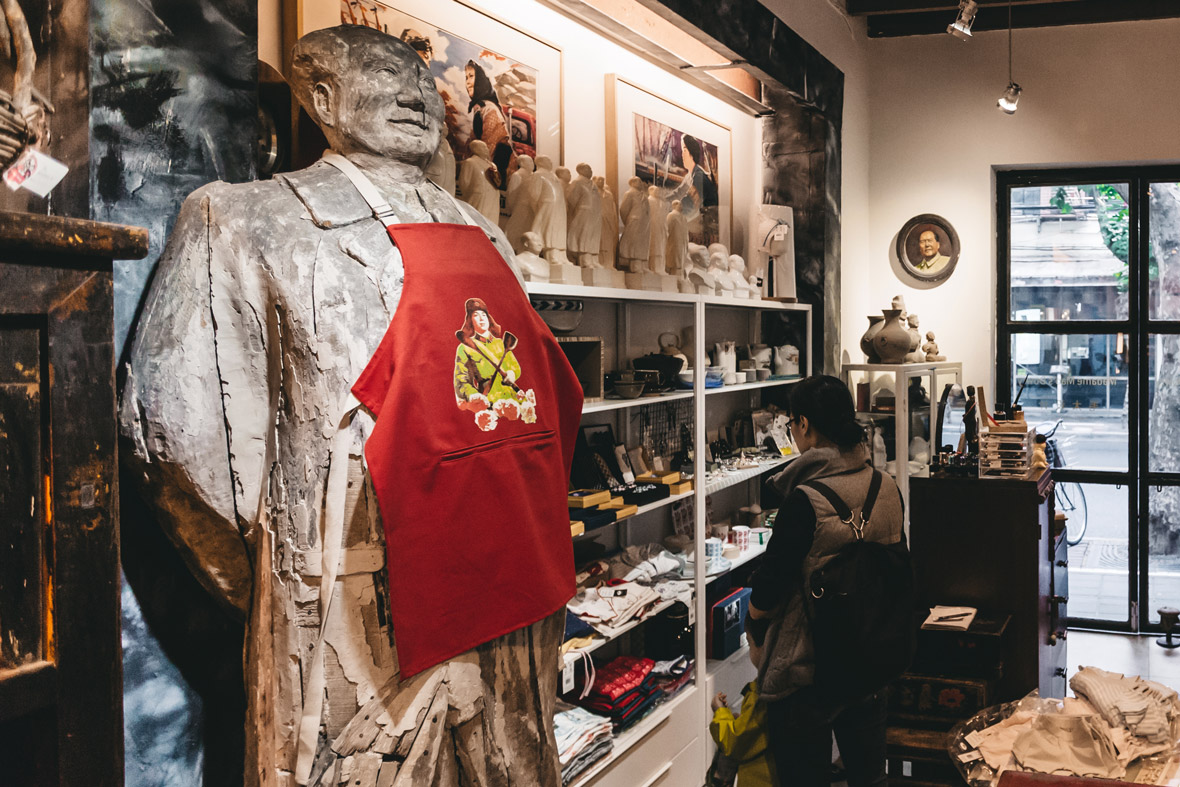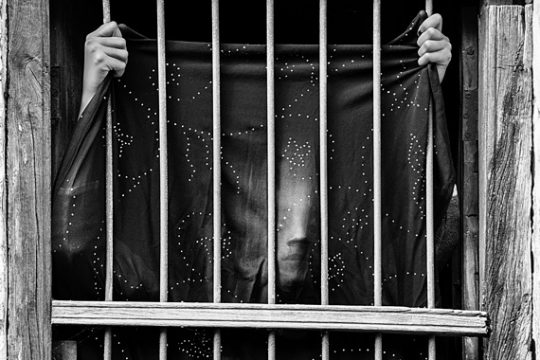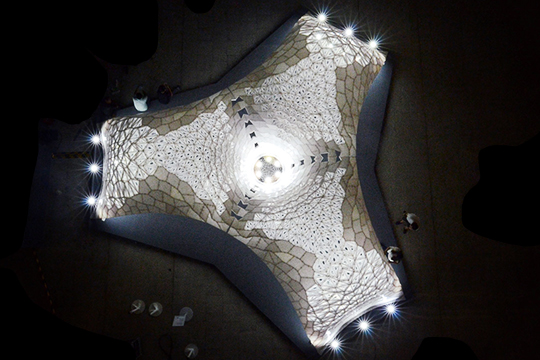
In a tiny storefront on Fumin Road, next to the shoebox cafés and hipster bars of Shanghai’s former French Concession, Linda Johnson sells an unusual mix of old and new: antique furniture, vintage maps, cellphone cases, photographs, handmade jewelry, baby onesies, chapbooks, small-press zines, fountain pens, wrapping paper, and much more. Madame Mao’s Dowry, as her boutique is called, first opened its doors in 2001, and in its nearly two decades of operation, Johnson has witnessed a dramatic transformation, both in the surrounding neighborhood and in Chinese design generally. While the shop has changed to keep up with the times—sometimes involuntarily, as when rising rent forced it to shrink to half its original size—Johnson has stayed true to her founding mission: to showcase “design that’s proudly Chinese for living in modern China.”
在上海静安区富民路的一家小店面,在逼仄的咖啡馆和时尚酒吧的边上,Linda Johnson 的店卖的则是不同寻常的新旧组合:古董家具、旧地图、手机盒、照片、手工首饰、婴儿连体衣、诗歌别册、独立杂志、自来水笔、包装纸……等等。这家店在 2001 年首次开张,名为“毛太设计”(Madame Mao’s Dowry)。开业近二十年,Linda 见证了周边社群和中国设计业的戏剧性转变。随着时间的推移,商店不断地衍化调整(有时是不得已而为止:比如几年前由于房租上涨店铺面积缩小到原来的一半)但 Linda 一直忠于初心:“以中国身份为荣的本土当代设计”。
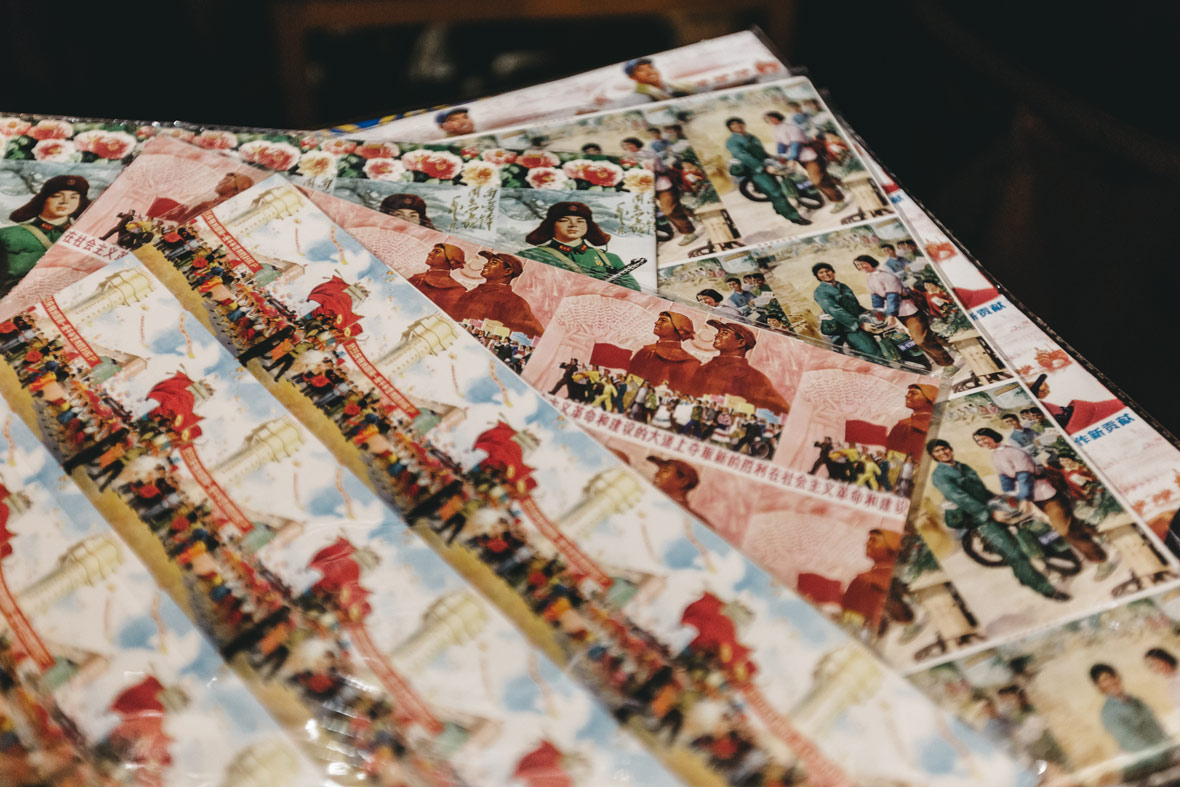
“In the old days, my partner and I would scout university departments and art studios looking for designers, or follow leads given to us by artists from Shanghai and Beijing. We would use our shop, then on Fuxing Road, like a gallery, holding regular exhibitions of designed products,” Johnson recalls. “Interest in the whole design market was growing rapidly.” Yet in the early 2000s, that interest came largely from foreigners, and it didn’t extend much beyond Qing-dynasty porcelain and textile patterns. “Our aim was to challenge that, and to say that China’s modern history had a significant impact on art practice,” she explains.
“在过去的日子里,我和我的搭档会去找大学的设计院系和艺术工作室寻找设计师,或者跟着上海和北京的艺术家给我们的线索去找人。我们会在我们的店铺,或在复兴路,像一个画廊一样定期举办有关设计的产品展览。” Linda 回忆说,“人们对整个设计市场的兴趣迅速增长。”但是在新世纪初,这些设计感兴趣的主要还是外国人,除了清朝的瓷器和织锦纹样之外,并没有延伸开去。“我们的目标是挑战这种状况,并告诉大家中国现代历史对艺术实践产生了重大影响。”她解释说。
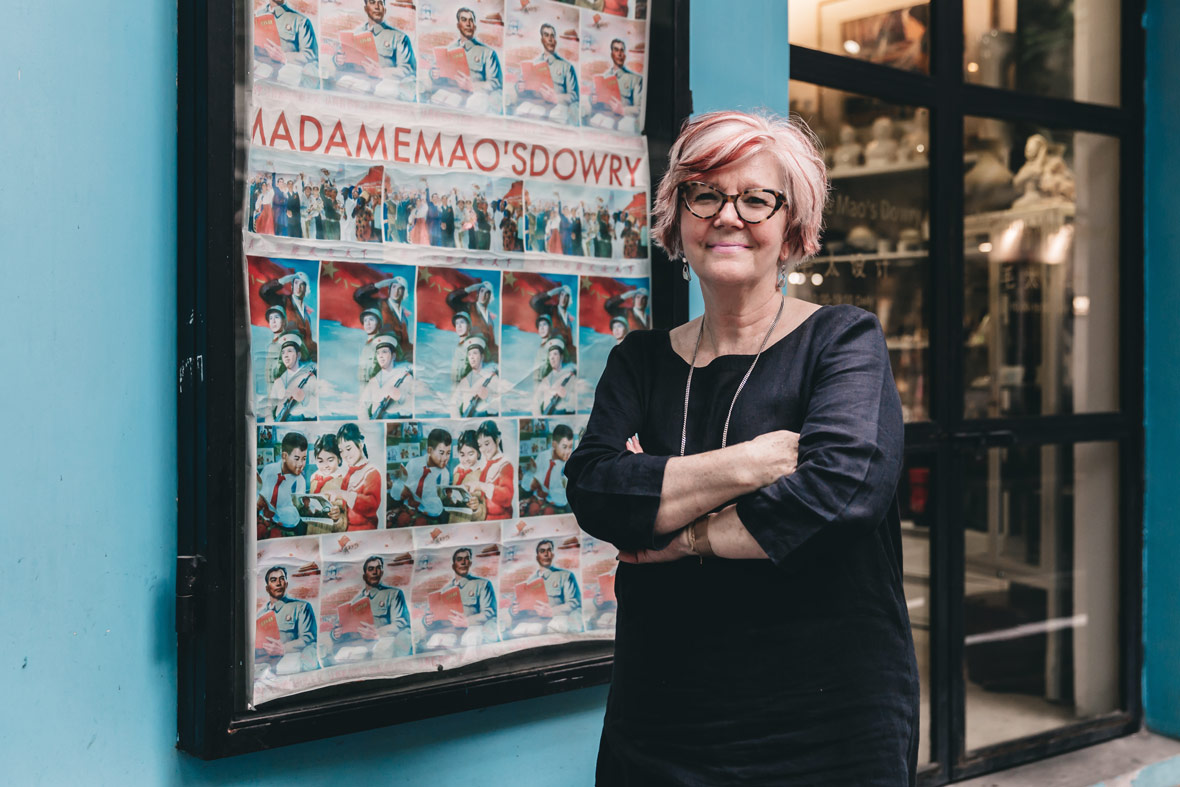
Johnson’s boutique seeks to highlight the Mao era’s contributions to contemporary design (hence the name). It puts particular emphasis on art and artifacts from the Cultural Revolution, the calamitous decade from 1966 to 1976 that plunged the country into a protracted state of chaos. Customers react to this focus in different ways. “Some can be quite angry and disparaging, assuming that we’re glorifying the horrors, which of course we are not,” says Johnson. “Others are curious to learn more, and our collection of posters and news photographs has provided a resource, especially for local people, to understand something about ordinary life during the period.”
Chinese art from that era, with its smiling peasants and steely-eyed soldiers, today looks colorfully unreal, if not downright camp. Yet Johnson cautions against writing it off as mere propaganda. She believes it can and should be regarded separately from its political origins. “Our focus is the art and design of the period and its impact on contemporary aesthetics, not on the decision-making of its leaders,” she states.
Linda 的精品店试图突出“毛时代”对当代设计的贡献(也因此而得名)。它特别重视文革时期的艺术和艺术品,1966 年至 1976 年那充满灾难的十年,使国家陷入了长期的混乱状态。而顾客对此以呈现不同的反应。Linda 说:“有些人可能会非常愤怒或不屑,以为我们在称赞这种暴行,但我们当然不是这个意思。而另一些人则会想了解更多,那么我们收集的海报和新闻照片就提供了资源渠道,特别是对当地人来说,让他们了解这一时期的日常生活。”
那个时代的中国艺术作品,总会有面带微笑的农民和目光坚定的士兵,从现在的角度来看颇有些奇幻色彩,甚至可说是矫揉造作。然而,Linda 想要警示人们,不要把它仅仅当作宣传画来看。她认为,这种艺术形式可以而且应该同其政治渊源分开看待。“我们的重点是这个时期的艺术和设计及其对当代美学的影响,而不是领导人的决策。”她说。
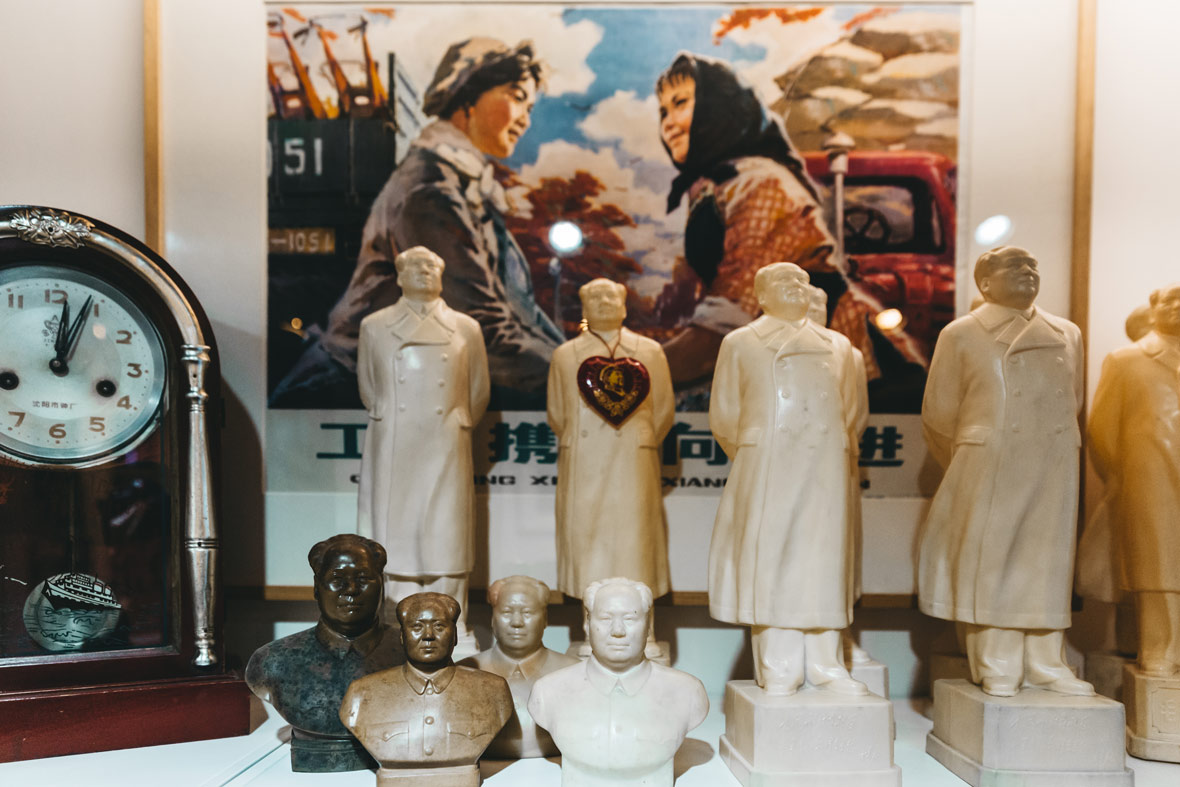
Of course, not all the products in the boutique are from the 1960s and 1970s. In fact, most of them aren’t. Madame Mao’s Dowry features work by contemporary jewelers, ceramic sculptors, printmakers, poets, graphic artists, fashion designers, and more, and their work runs the gamut of different styles. For Johnson, this diversity is proof of how much Shanghai’s design scene has grown over the last two decades. “Design is a very different concept here today,” she notes, “and what’s produced is much more varied and much more sophisticated. There’s also a much broader mix of nationalities of young designers living in Shanghai.”
当然,店里并非所有的产品都是上世纪六七十年代的,事实上,绝大部分都不是。“毛太设计”以当代珠宝商、陶瓷雕刻家、版画师、诗人、平面艺术家、时装设计师的作品为特色,并涵盖了各种不同的风格。对 Linda 来说,这种多样性证明了过去二十年中上海设计界的巨大进步。“在如今,设计是一个非常不同的概念。”她说,“它所产生的是更加多样化和复杂得多的东西。生活在上海的年轻设计师的国籍也要广泛得多。”
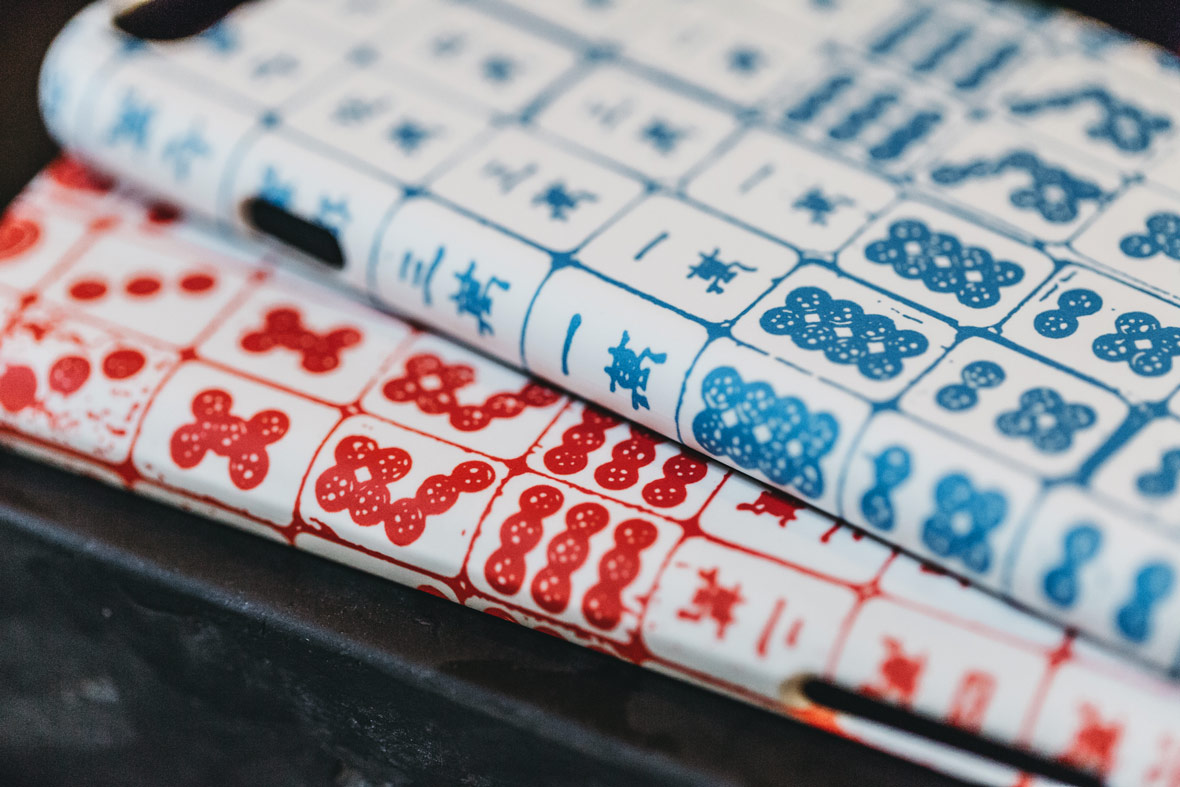
Beyond providing a space for local designers to sell their wares, Madame Mao’s also hosts events, such as poetry readings for Literary Shanghai or the Shanghai Literary Review. The aim is to provide a space for creative people working in Shanghai. “Many visitors have remarked that Madame Mao’s Dowry is more like a museum than a shop,” says Johnson. “It’s about valuing the culture China produces, not just selling it.”
除了为当地设计师提供销售商品的空间外,“毛太设计”还举办活动,如《文学上海》或《上海文艺评论》的诗歌阅读会。其目的是为在上海工作的创意人才提供一个空间。“很多游客都说,‘毛太设计’与其说是一家商店,倒不如说更像是一个博物馆。” Linda 如是说,“这是对中国生产的文化的珍视,而不仅仅是销售产品。”
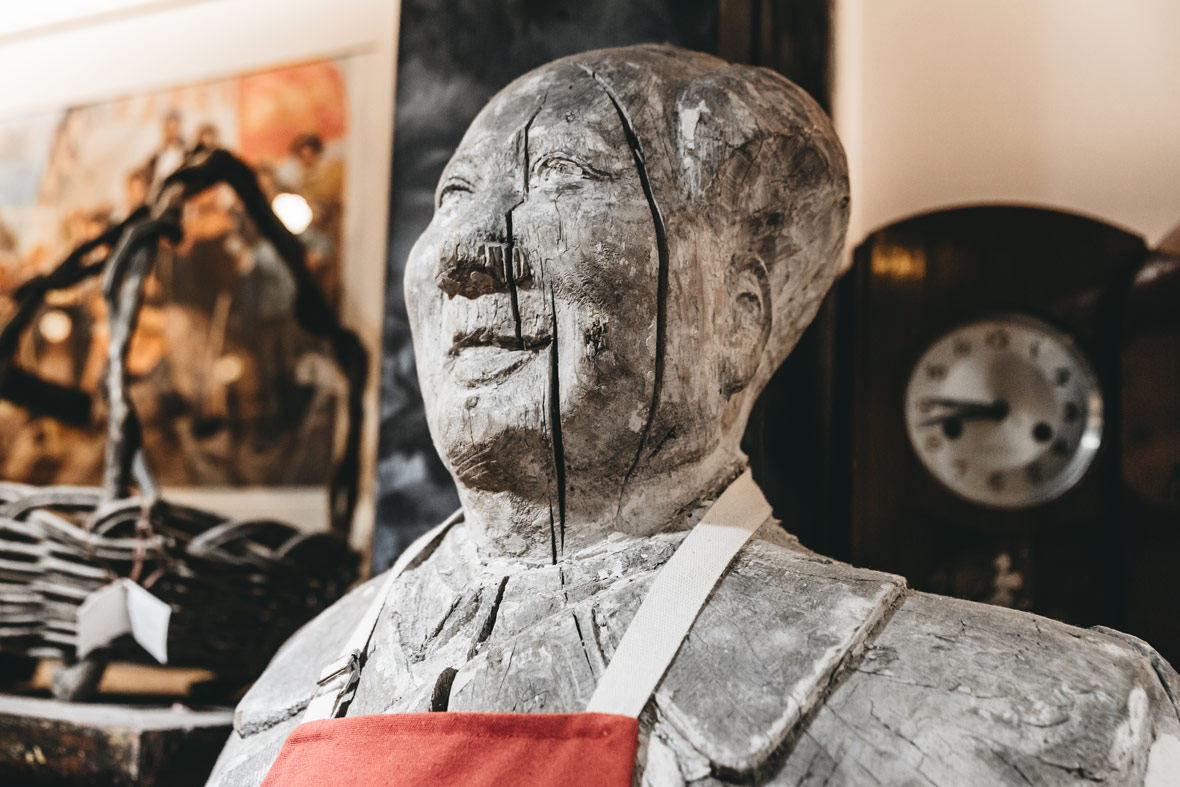
As Shanghai continues to change, Madame Mao’s, with its mix of antique and contemporary design, provides a bridge between the city’s past and its future. Johnson says that the visitors she values most, even though they rarely purchase anything, are the locals who have lived in the neighborhood for most of their lives: “they share stories with me of their experiences, which are often tinged with nostalgia and regularly surprising.” In a city single-mindedly turned toward the future, insisting on the relevance of mid-twentieth-century art is a way of keeping the past alive.
随着上海的不断变化,“毛夫人嫁妆”和当代设计的结合,为这座城市的过去和未来提供了一座桥梁。Linda 说,她最看重的是来此的顾客,即使他们很少购买任何东西,但他们是那些在附近生活了大半生的当地人:“他们和我分享他们的经历,这些经历常常带有怀旧的味道,而且经常令人惊讶。”在这个一心扑向未来的城市里,坚持与上世纪中期的艺术作品有所关联,可谓是一种铭记过往的方式。
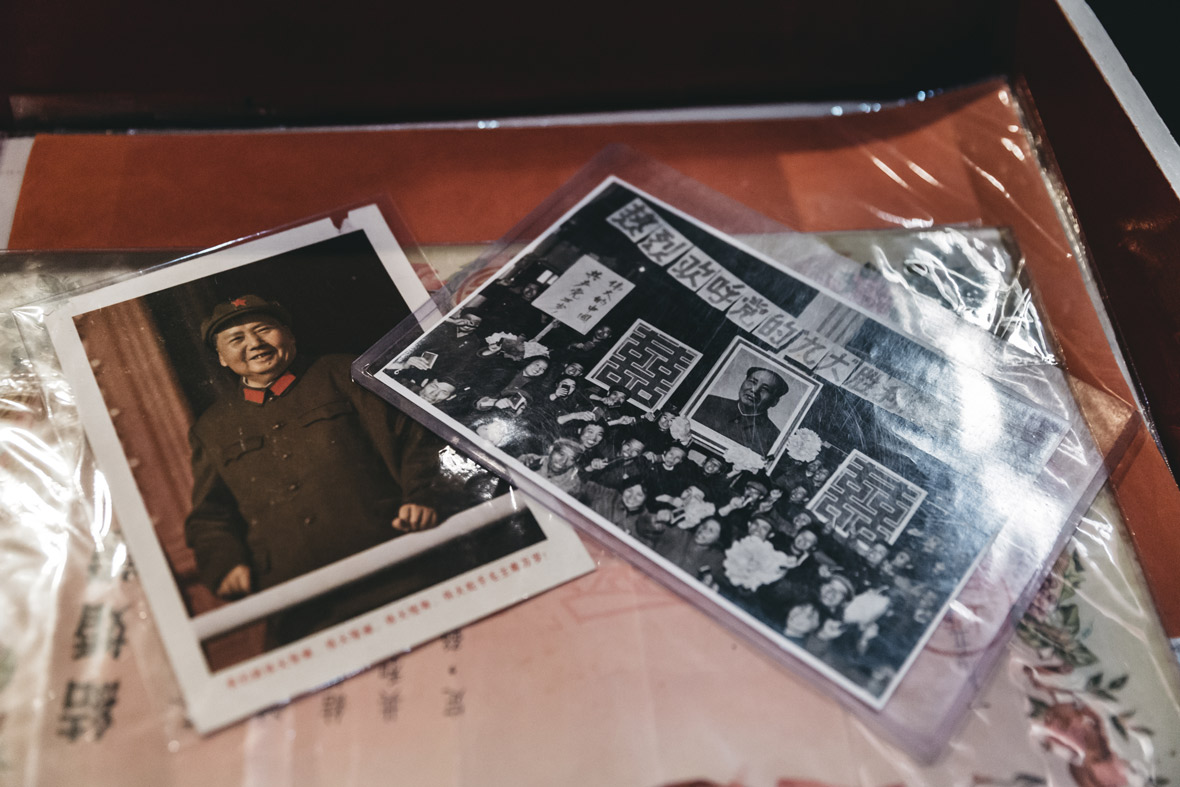
Address:
207 Fumin Road
Jing’an District, Shanghai
People’s Republic of China
Hours: Monday ~ Sunday, 10 am ~ 7 pm
Website: madamemaosdowry.com
Contributor: Allen Young
Photographer: David Yen

